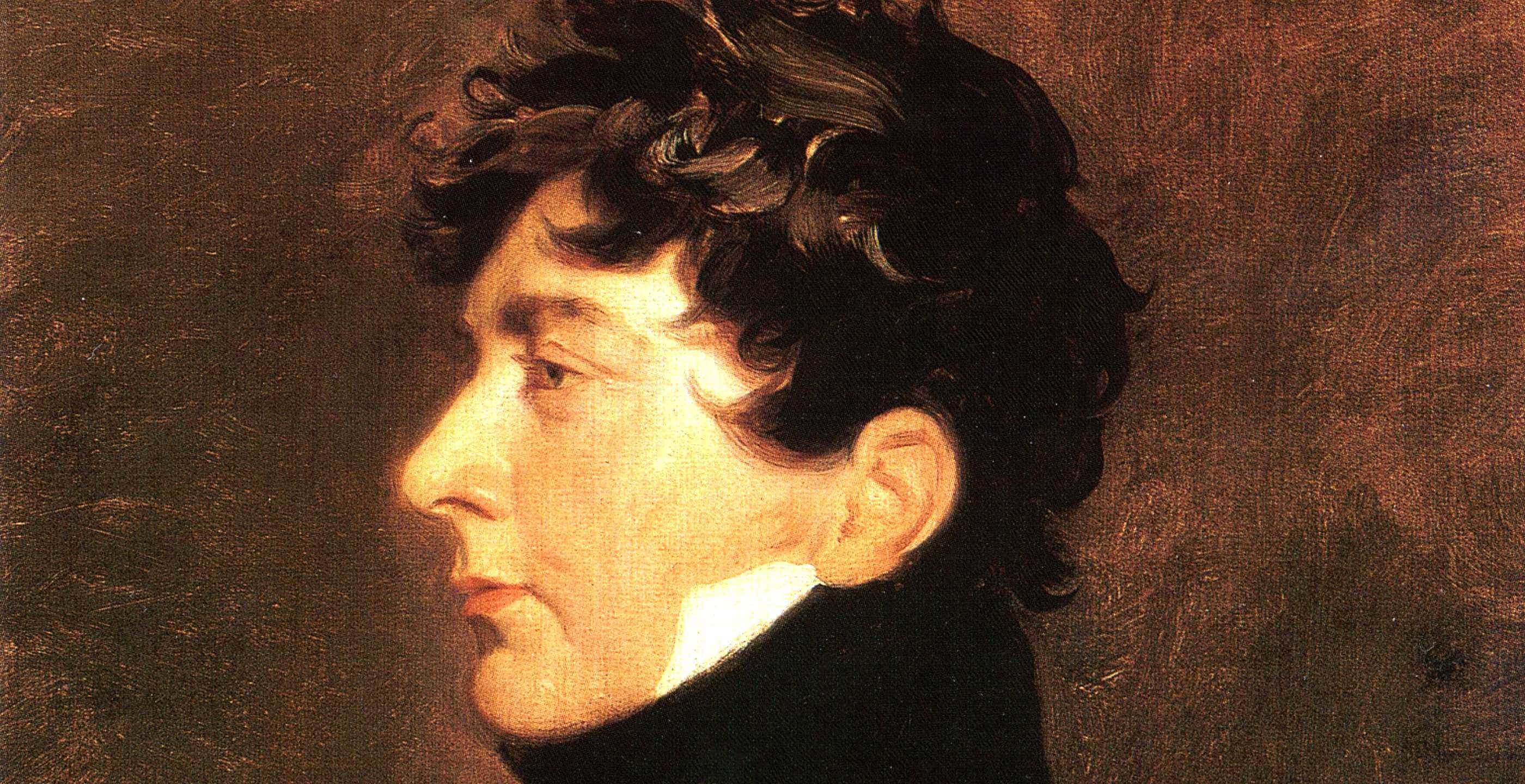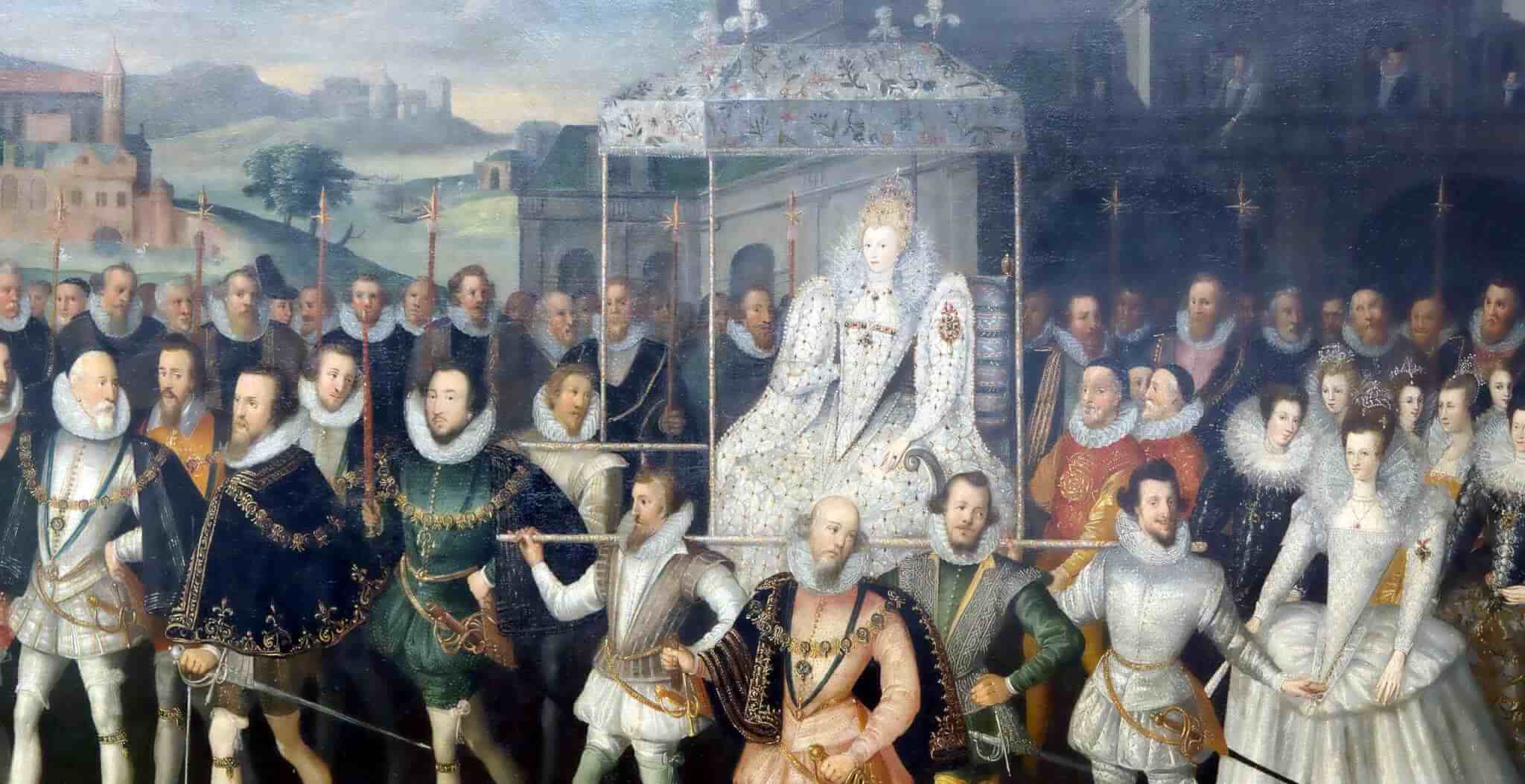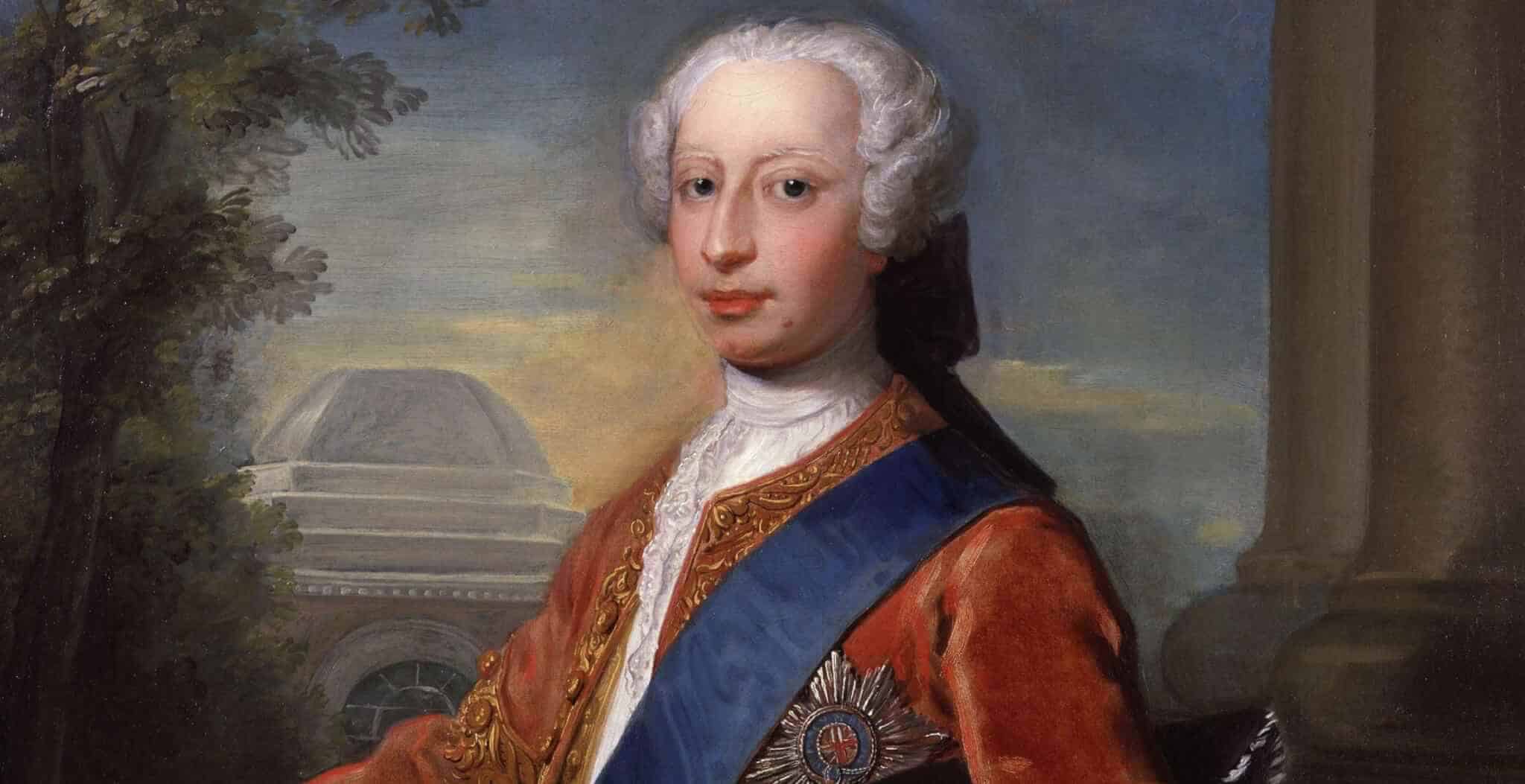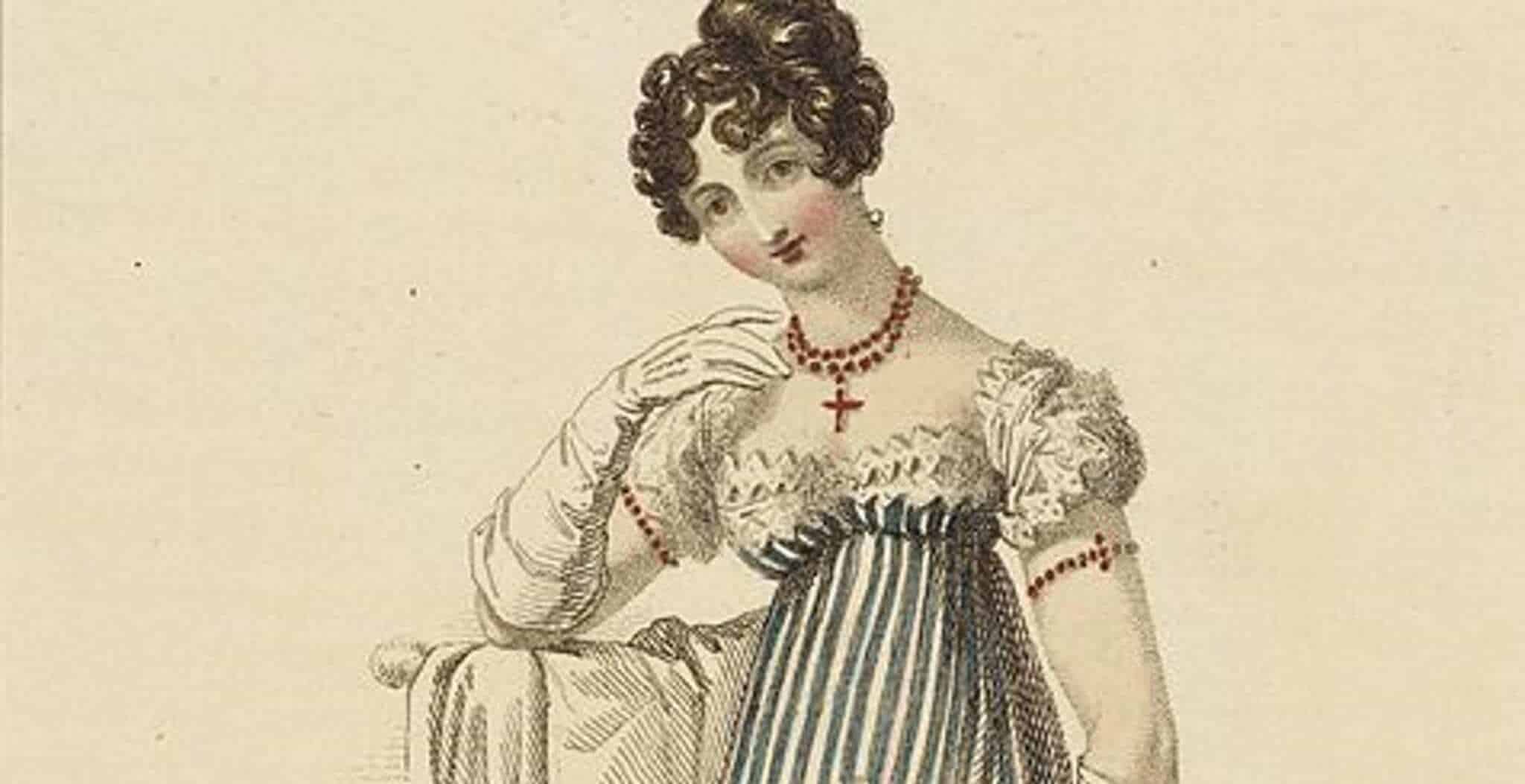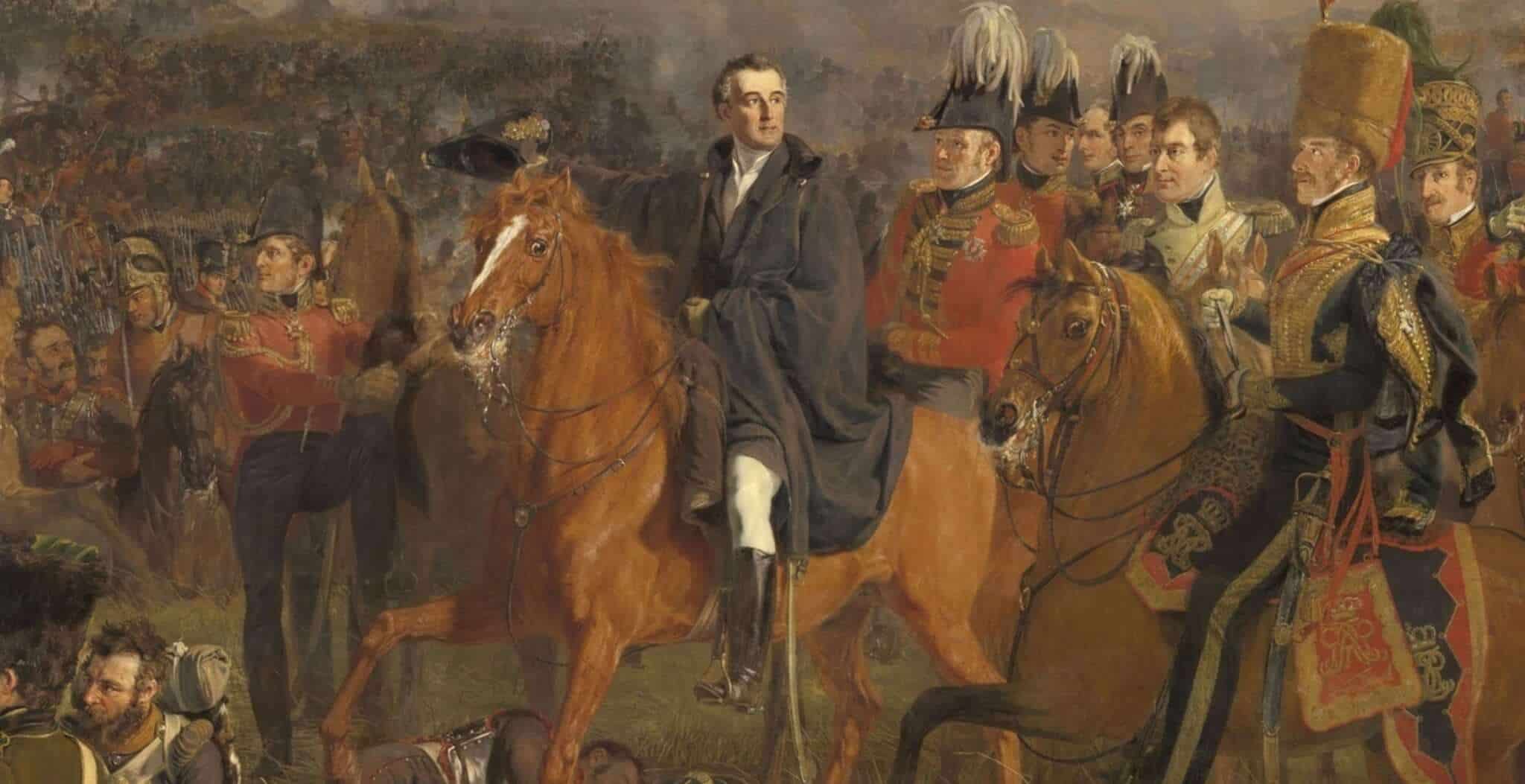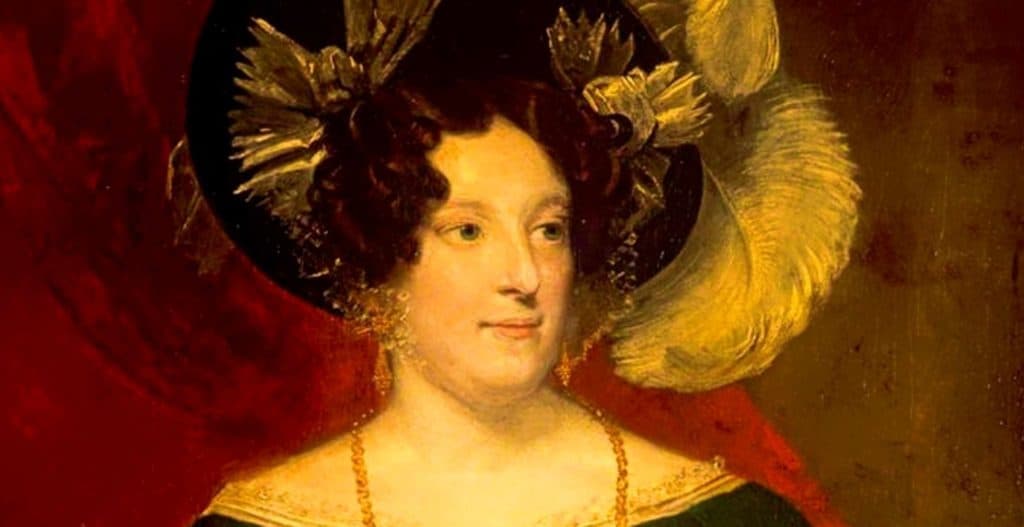George IV – as a prince and then a king – would never have had an ordinary life. Yet even with this in mind, it would seem that his life was more than usually extraordinary. He was both ‘The First Gentleman of Europe’ and an object of contempt and ridicule. He was known for his manners and charm, but also his drunkenness, spendthrift ways and scandalous love life.
Born on 12th August 1762, as the eldest son of King George III and Queen Charlotte, he was made Prince of Wales within a few days of his birth. Queen Charlotte would go on to give birth to fifteen children in total, of whom thirteen would survive to adulthood. However, of all his many siblings, George’s favourite brother was Prince Frederick, born only the following year.
His relationship with his father was strained, and George III was heavily critical of his son. This difficult relationship continued into adulthood. For example, when Charles Fox returned to parliament in 1784 – a politician who was not on good terms with the king – Prince George cheered him on and donned his colours of buff and blue.
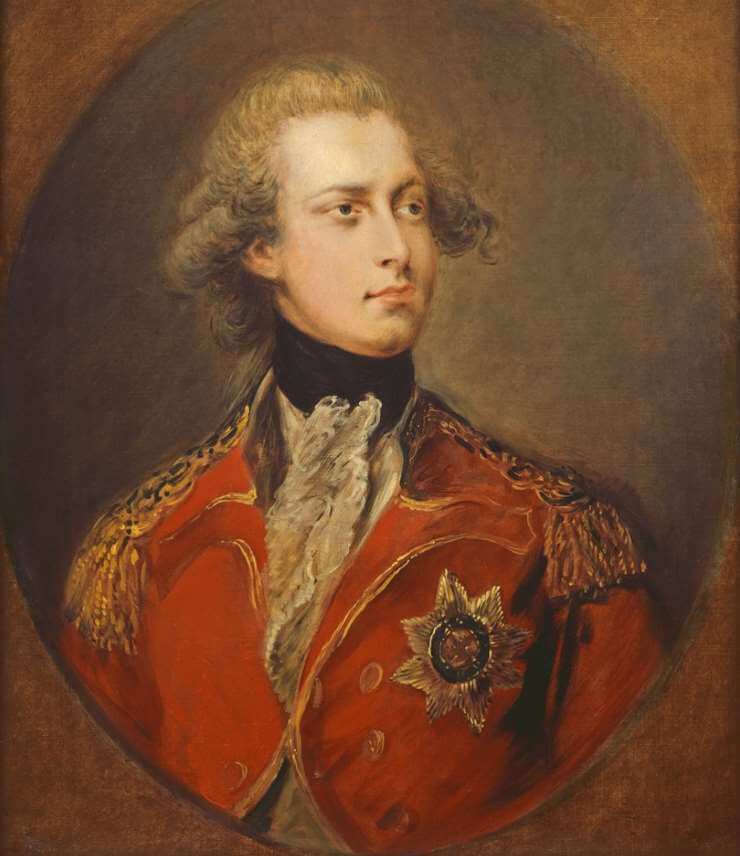
Of course, it could be said that there was plenty for George III to criticise. Prince George conducted his love life entirely without discretion. He had numerous affairs over the years, but his behaviour with regard to Maria Fitzherbert is the stuff either of legend or parental nightmares. (Especially if one happens to be a royal parent.) The 1772 Royal Marriages Act forbade those in direct line to the throne from marrying under the age of twenty five, unless they had the sovereign’s consent. They could marry over the age of twenty five without that consent, but only if they won the approval of both houses of parliament. As a commoner and a Roman Catholic, the twice widowed Mrs Fitzherbert was hardly going to be an acceptable royal bride to anyone.
And yet the young prince was adamant that he loved her. After extracting a promise of marriage from Mrs Fitzherbert – one given under duress, after George appeared to have stabbed himself in a fit of passion, although he may also have opened wounds from where his doctor had earlier bled him – they were secretly married in 1785. But it was a marriage without any legal basis, and was consequently considered invalid. Their love affair nevertheless continued, and their supposedly secret marriage was naturally common knowledge.
There was also the matter of money. Prince George ran up huge bills improving, decorating and furnishing his residences in London and Brighton. And then there was the entertaining, his stables and other princely expenses. While he was a great patron of the arts and Brighton Pavilion remains famous to this day, George’s debts were eye-watering.
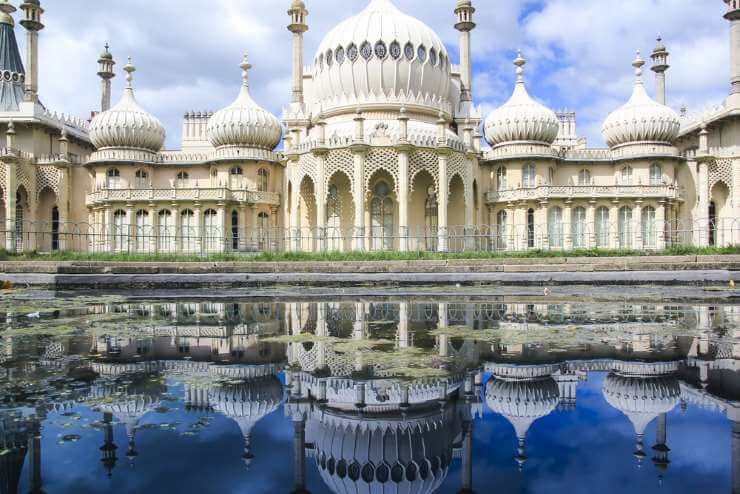
He went on to marry (legally) in 1795. The bargain was that he would marry his cousin, Caroline of Brunswick, and in exchange his debts would be cleared. However, at their first meeting Prince George called for brandy and Princess Caroline was left asking if his behaviour was always thus. She also declared that he was not as handsome as she had expected. George was subsequently drunk at their wedding.
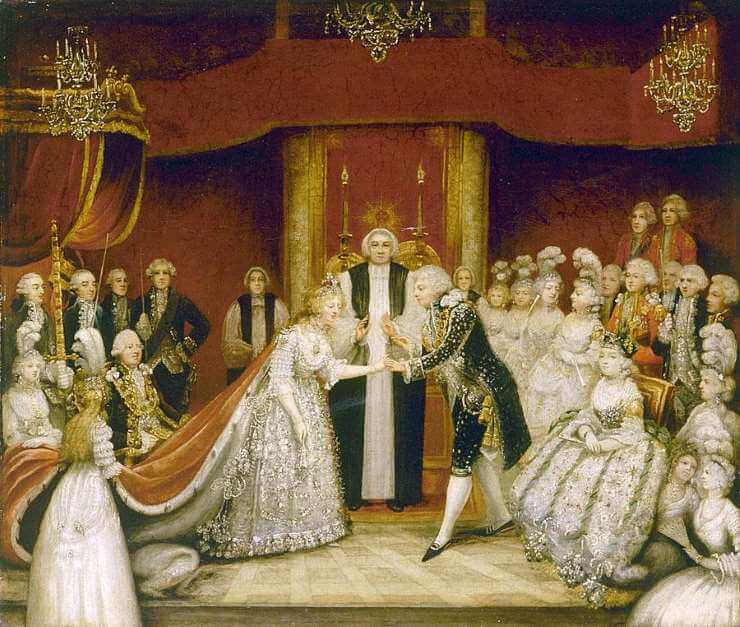
Rather unsurprisingly, the marriage was an unmitigated disaster and the couple would go on to live separately. Relations between them did not improve after their separation. They had one child, Princess Charlotte, who was born in 1796. However, the princess was not to inherit the throne. She died in childbirth in 1817, to a great outpouring of national grief.
George is of course known for his tenure as Prince Regent. George III’s first period of apparent madness occurred in 1788 – it is now believed that he may have been suffering from a hereditary disease called porphyria – but recovered without a Regency having been established. However, following the death of his youngest daughter, Princess Amelia, George III’s health declined again in late 1810. And so, on 5th February 1811, Prince George was appointed Regent. The terms of the Regency initially placed restrictions of George’s power, which would expire after one year. But the king did not recover and the Regency continued until George succeeded to the throne in 1820.
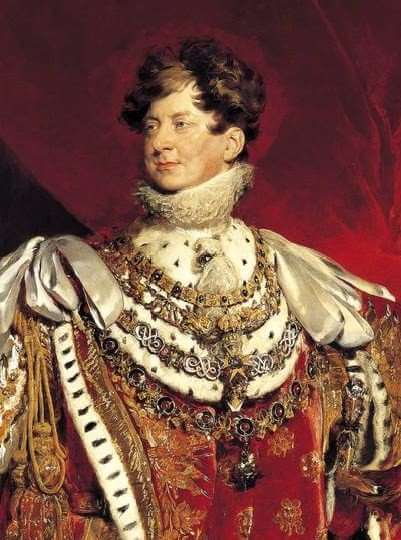
Yet George IV’s coronation the following year is famous (or infamous) for its uninvited guest: his estranged wife, Queen Caroline. When he became king, George IV had refused to recognise her as queen and had had her name omitted from the Book of Common Prayer. Nevertheless, Queen Caroline arrived at Westminster Abbey and demanded to be let in, only to be met with a refusal. She died less than one month later.
George IV was 57 when he came to the throne, and by the late 1820s his health was failing him. His heavy drinking had taken its toll, and he had long been obese. He died in the early hours of the morning on 26th June 1830. In a sad and unpleasant echo of his wedding, the undertakers at his funeral were drunk.
Concluding up such a life, particularly one so briefly summarised, will always be difficult. But George IV lived through, and reigned over, a period of great social, political and cultural change. And he lent his name to the age twice over, as one of the Georgians and again for the Regency.
Mallory James is the author of ‘Elegant Etiquette in the Nineteenth Century’, published by Pen and Sword Books. She also blogs at www.behindthepast.com.
